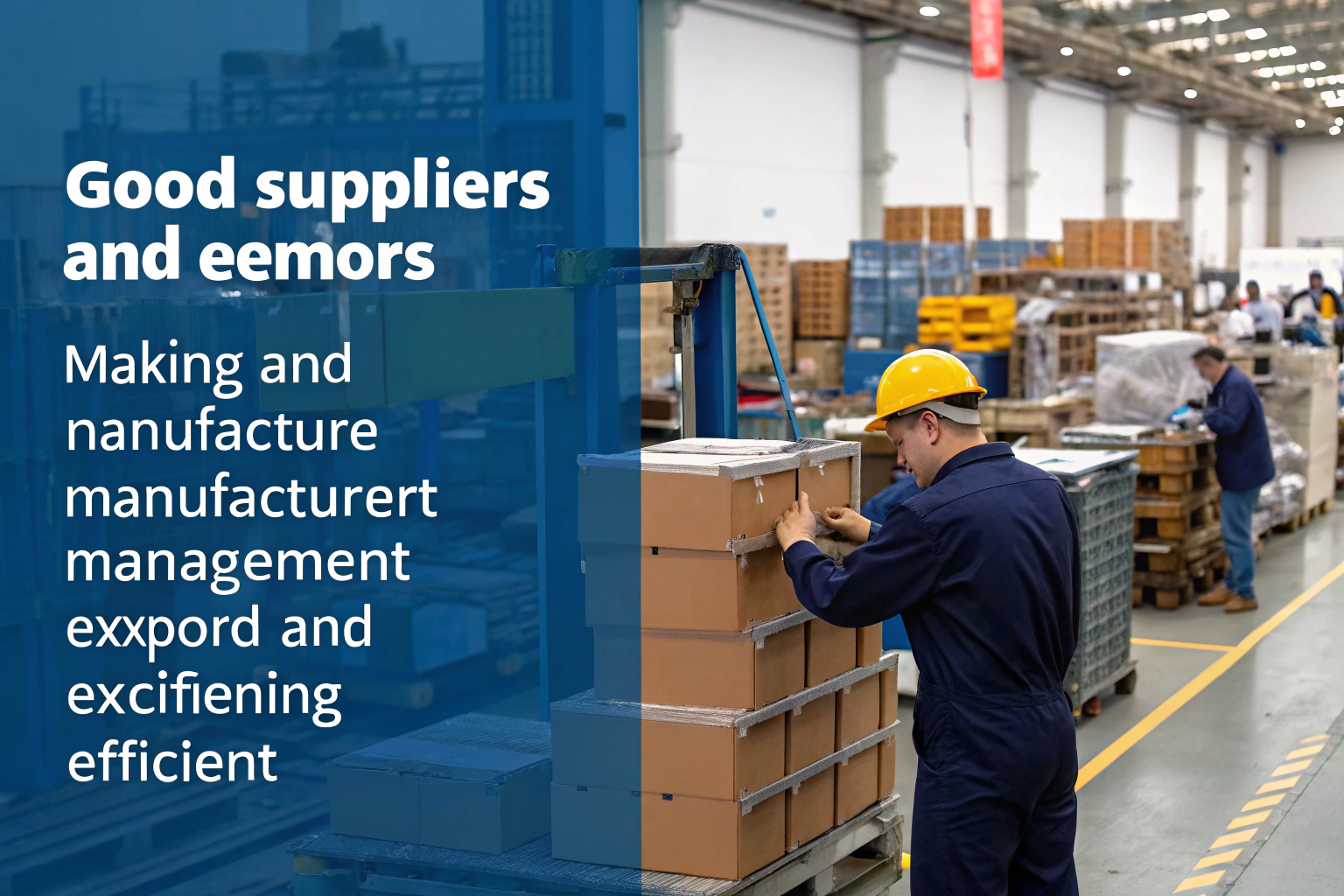Are you sourcing fabrics and wondering about the difference between sueding and emerizing finishes? Many professionals in the textile industry struggle to distinguish between these mechanical finishing processes. Understanding this distinction is crucial for making informed sourcing decisions that affect your product quality, cost structure, and market positioning. As an expert with two decades in textile manufacturing, I'll provide clear explanations to guide your fabric selection process.
Sueding and emerizing are mechanical finishing techniques that create brushed fabric surfaces through different abrasive processes. Sueding employs rollers covered with coarse abrasive materials to generate a pronounced, suede-like nap on primarily the fabric face. Emerizing utilizes fine emery-covered rollers to produce a subtle, peach-skin texture that can be applied to both fabric sides. Both methods enhance tactile properties while maintaining fabric integrity.
The technical differences between these processes significantly impact your final product specifications. Choosing the appropriate finish requires understanding mechanical parameters, fiber compatibility, and performance characteristics. Let's examine the operational specifics and application considerations for each finishing method.
What constitutes the sueding process in textile finishing?
Sueding represents a mechanical finishing operation that transforms fabric hand feel through controlled abrasive action. This process achieves a suede-like texture ideal for enhancing comfort in various apparel applications while maintaining fabric durability.
The sueding mechanism involves multiple rollers coated with silicon carbide or aluminum oxide abrasives. As substrate materials pass through these rollers under controlled tension, the abrasive surfaces raise fiber ends to create uniform surface nap. This mechanical action primarily affects cellulosic fibers and their blends, producing the characteristic soft hand associated with sueded textiles. Our manufacturing facilities employ precision-controlled sueding equipment that maintains consistent abrasive intensity across production runs.
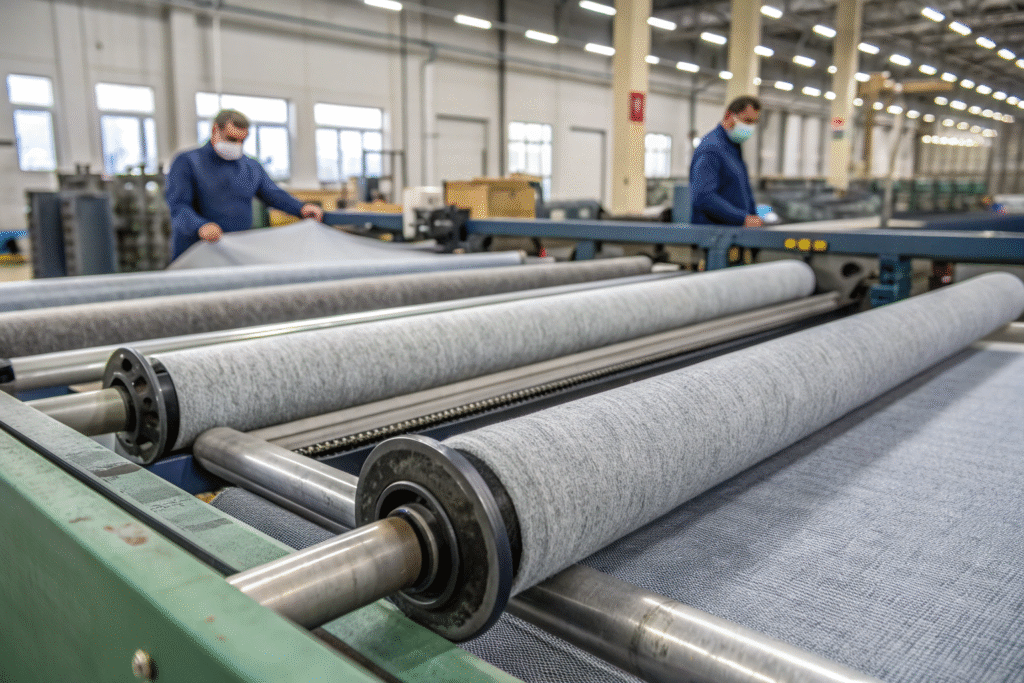
How does abrasive selection influence sueding outcomes?
Abrasive grit size and composition directly determine the resulting fabric hand. Coarser abrasives (80-120 grit) create more pronounced nap for heavy-duty applications, while finer grades (180-240 grit) produce subtle texture for fashion textiles. The abrasive material must be selected according to fiber composition and yarn construction to optimize results without compromising tensile strength. Our technical team specifies abrasives based on comprehensive fiber analysis and desired performance characteristics.
What performance attributes does sueding impart to textiles?
Sueding enhances multiple fabric properties beyond surface aesthetics. The process improves insulation characteristics through increased air entrapment in the raised fiber matrix. Additionally, the textured surface demonstrates superior opacity and effective visual masking of minor substrate imperfections. These technical benefits make sueded fabrics particularly suitable for performance apparel where comfort and durability are paramount. Our quality assurance protocols verify that sueding enhancements meet specified performance standards throughout the product lifecycle.
How does emerizing differ technically from sueding?
Emerizing constitutes a distinct mechanical finishing approach characterized by refined abrasive treatment. This process achieves peach-skin texture through precise fiber manipulation that preserves substrate integrity while enhancing tactile qualities.
The emerizing process employs rollers coated with fine emery particles (typically 400-600 grit) that gently abrade filament surfaces. This controlled action teases out microfibers without breaking primary yarn structure, creating the characteristic peach-skin effect. The technique is particularly effective on microdenier polyester and other synthetic filaments where surface refinement is desired. Our emerizing operations maintain precise control over roller speed, fabric tension, and abrasive contact to ensure consistent finish quality.
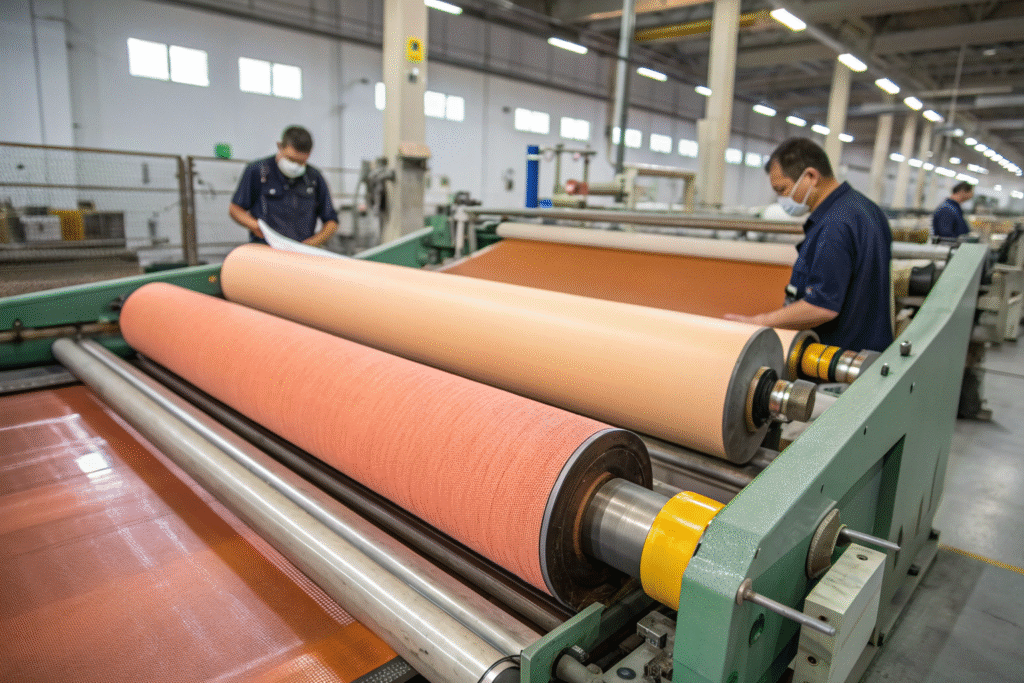
What mechanical parameters govern emerizing quality?
Emerizing efficacy depends on multiple operational variables including emery grit specification, roller rotational velocity, and substrate tension control. Finer emery grades (500+ grit) produce smoother hands suitable for luxury applications, while moderate grades (300-400 grit) balance texture development with production efficiency. The process requires exacting tension control to prevent distortion in delicate woven constructions. Our computerized emerizing systems maintain these parameters within strict tolerances across production batches.
Why select emerizing for technical textile applications?
Emerizing offers distinct advantages for performance-oriented textiles where surface refinement must not compromise functional properties. The process minimally affects tensile strength and dimensional stability while providing enhanced moisture management through increased surface area. These characteristics make emerized fabrics ideal for technical applications requiring precise balance between comfort and durability. Our R&D department continuously optimizes emerizing parameters to meet evolving performance requirements in activewear and specialized apparel segments.
Which textile substrates respond optimally to each finishing method?
Substrate selection critically influences finishing outcomes for both sueding and emerizing processes. Fiber composition, yarn construction, and fabric geometry determine compatibility with each mechanical finishing approach.
Sueding delivers optimal results on robust woven constructions featuring natural fibers or durable blends. The process requires substrates with sufficient tensile strength to withstand abrasive action without structural compromise. Emerizing demonstrates superior performance on fine synthetic fabrics and delicate blends where subtle surface enhancement is desired. Microfiber woven constructions particularly benefit from emerizing's gentle fiber teasing action that enhances inherent material properties.
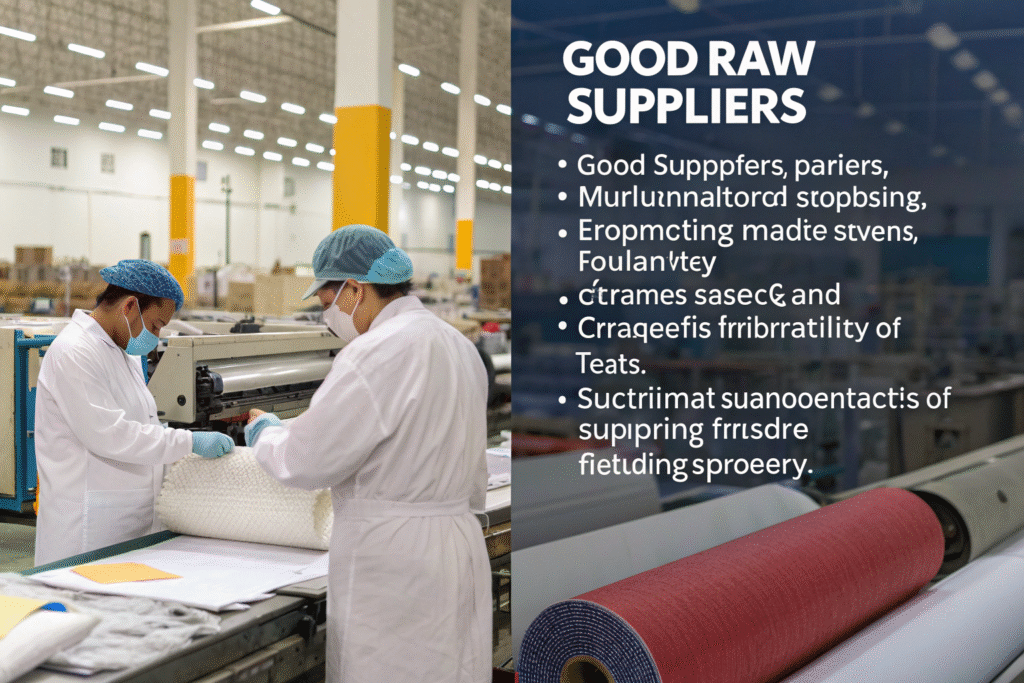
What fabric specifications suit sueding applications?
Sueding requires substrates with specific technical characteristics to ensure quality results. The following table outlines optimal fabric parameters for sueding processes:
| Fabric Characteristic | Specification Range | Performance Consideration |
|---|---|---|
| Yarn Count | 20-40 Ne | Optimizes nap formation |
| Fabric Weight | 180-350 gsm | Balances hand and durability |
| Tensile Strength (warp) | >300 N | Withstands abrasive action |
| Fiber Composition | Natural/synthetic blends | Enhances nap retention |
These specifications ensure that sueded fabrics maintain structural integrity while achieving desired tactile properties. Our technical team verifies substrate compatibility before processing commencement.
Which textiles achieve premium results through emerizing?
Emerizing excels with specific fabric types where refined surface characteristics are paramount. The process enhances material value through controlled aesthetic improvement while preserving functional attributes:
| Fabric Type | Key Enhancement | Application Scope |
|---|---|---|
| Microfiber Polyester | Ultra-refined surface | Technical activewear |
| Polyester Georgette | Enhanced drape | Luxury apparel |
| Nylon Taffeta | Improved hand | Performance outerwear |
| Blended Knits | Surface uniformity | Contemporary fashion |
Our substrate analysis ensures that emerizing parameters are optimized for each textile classification, delivering consistent quality across diverse material types.
How is quality assurance maintained in mechanical finishing processes?
Quality management in mechanical finishing requires comprehensive protocols addressing both process control and output verification. Implementing rigorous quality systems ensures consistent performance across production batches while maintaining substrate integrity.
Our quality assurance framework begins with greige goods evaluation, assessing key parameters including evenness, strength, and construction consistency. During mechanical finishing, we monitor critical control points including abrasive sharpness, roller pressure, and fabric tension. Post-processing evaluation employs standardized testing methodologies to verify finish quality and durability. This systematic approach ensures that finished textiles meet specified technical requirements while maintaining production efficiency.
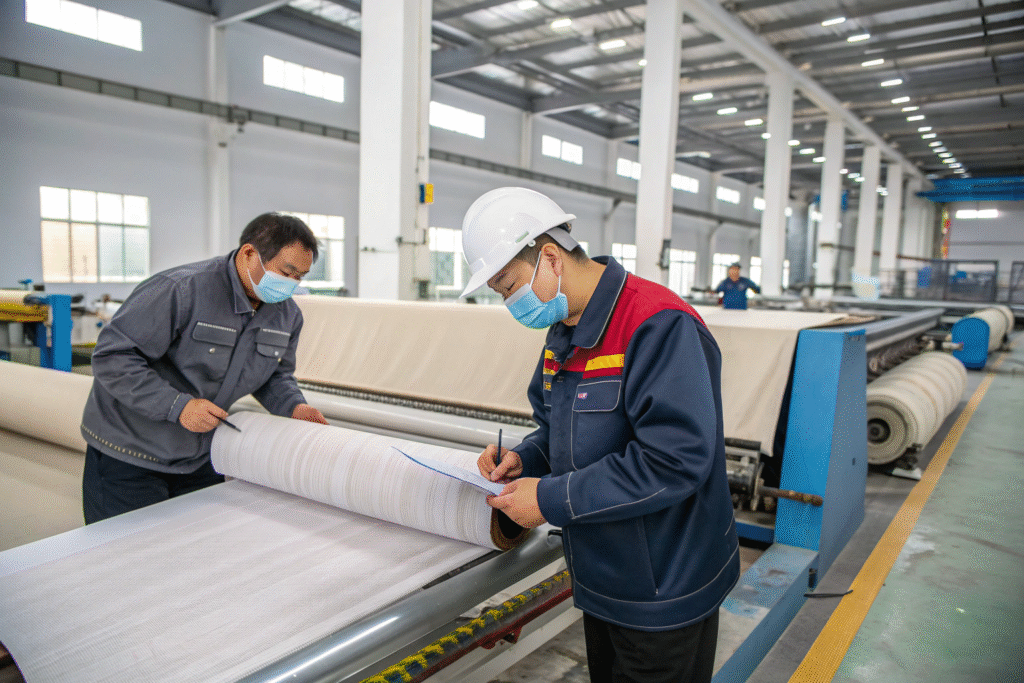
What testing protocols validate sueding and emerizing quality?
Our CNAS-accredited laboratory implements comprehensive testing regimens to verify finish quality and durability. Standard evaluation includes Martindale abrasion resistance testing, pilling assessment according to ISO 12945-2, and tensile strength verification. Additionally, specialized testing includes nap consistency measurement using laser profilometry and subjective hand evaluation by trained panels. These protocols ensure finished textiles meet international quality standards and performance expectations.
How does integrated manufacturing enhance finish quality?
Vertical integration provides significant advantages in mechanical finishing quality management. Our control over weaving, dyeing, and finishing operations enables seamless parameter adjustment throughout production. This integrated approach facilitates real-time process optimization based on upstream manufacturing variables. The implementation of quality management systems according to ISO 9001 standards ensures consistent adherence to specification requirements. Our documented quality metrics demonstrate 98% compliance with client technical specifications across finishing operations.
Conclusion
Sueding and emerizing represent distinct mechanical finishing methodologies with specific applications in textile enhancement. Sueding provides pronounced surface transformation for robust fabrics where tactile improvement is prioritized. Emerizing delivers refined surface modification for delicate textiles where subtlety and precision are essential. Understanding these technical distinctions enables informed fabric selection aligned with performance requirements and market positioning.
Fumao Textiles International leverages extensive expertise in both finishing techniques, supported by integrated manufacturing capabilities and rigorous quality systems. Our technical team provides comprehensive guidance on finish selection based on your specific product requirements and performance expectations. For detailed technical consultation regarding mechanical finishing applications for your textile projects, please contact our Business Director Elaine at elaine@fumaoclothing.com. Our expertise ensures optimal finish selection and execution for your specialized textile requirements.

